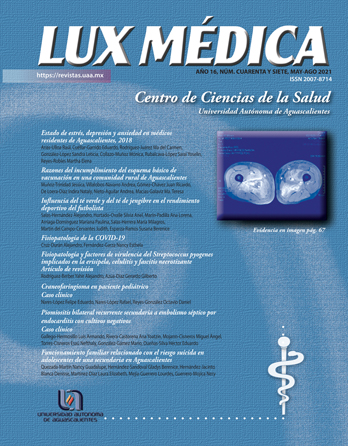COVID-19 pathophysiology
DOI:
https://doi.org/10.33064/47lm20213155Keywords:
Coronavirus, COVID-19, PandemicAbstract
In December 2019, a series of atypical pneumonia began to appear in Wuhan, China. It was quickly decided to typify the etiological agent, which turned out to be a new strain of coronavirus, which was called 2019-nCoV, later it would be renamed SARS-CoV-2 due to its great genetic homology to SARS-CoV, the causal virus of the acute respiratory distress syndrome and high mortality during the 2002 and 2003 epidemics. The disease caused by this virus was called COVID-19 (Coronavirus disease 19). In March 2020, the World Health Organization (WHO) declared this health emergency a pandemic state. SARS-CoV-2 primarily affects the respiratory system; however, it also affects almost all organs and systems of the individual. Similarly, although respiratory symptoms are the most prominent, extrapulmonary manifestations should not be underestimated, as they can compromise the patient's life. This review will mainly address the pathophysiology of SARS-CoV-2, and the immune response known to date.
Downloads
Downloads
Published
How to Cite
Issue
Section
License
La revista Lux Médica está bajo una licencia de Creative Commons Reconocimiento-NoComercial-Compartir Igual 4.0 Internacional.
10.56083/RCV4N6-214
10.61182/rnavmed.v10n1a3
10.55204/trc.v9789i8788.52












